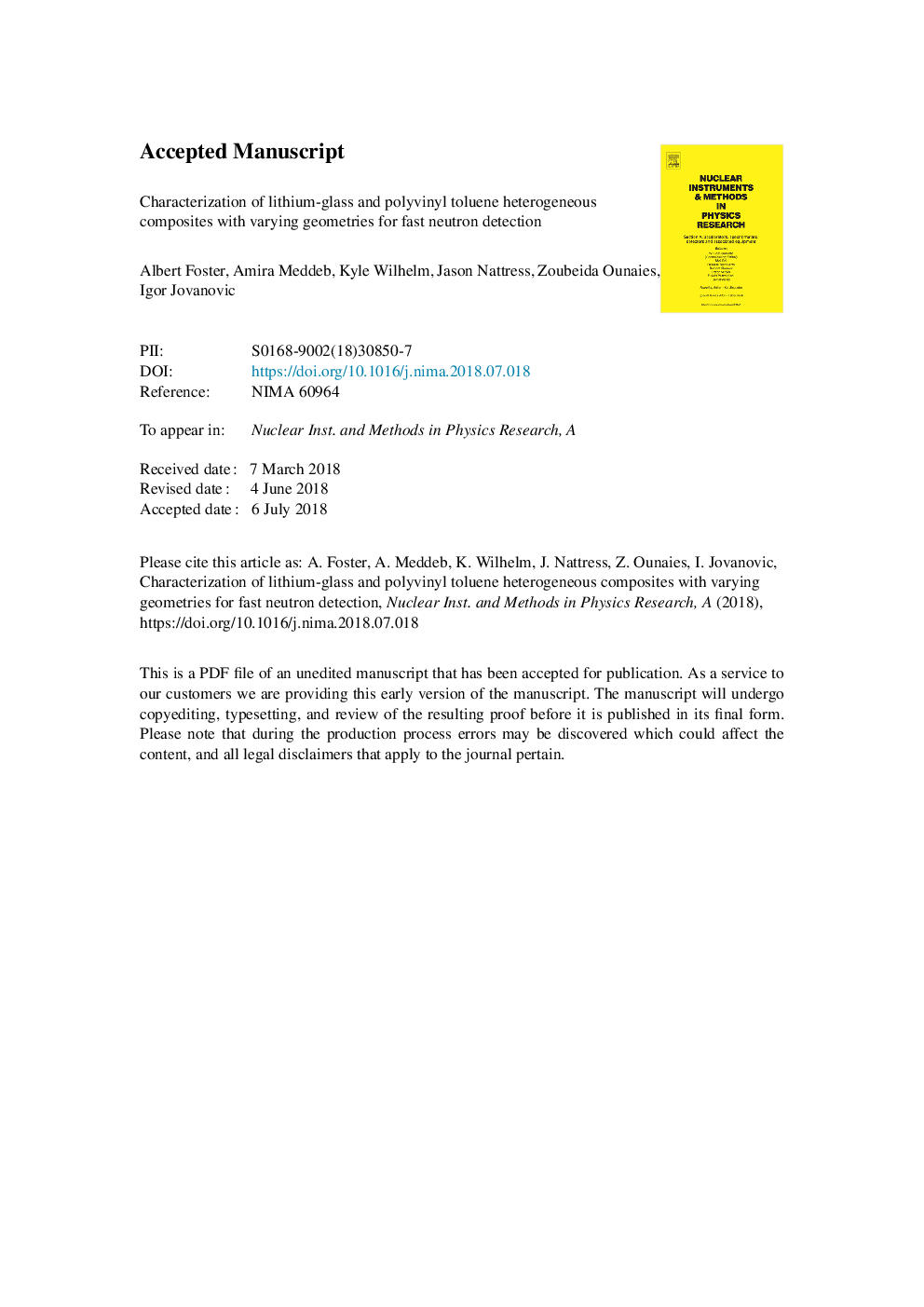| Article ID | Journal | Published Year | Pages | File Type |
|---|---|---|---|---|
| 8165892 | Nuclear Instruments and Methods in Physics Research Section A: Accelerators, Spectrometers, Detectors and Associated Equipment | 2018 | 8 Pages |
Abstract
In heterogeneous composite neutron detectors, materials with dissimilar characteristics are optically coupled to achieve functionalities that extend beyond those enabled by intrinsic properties of constituent materials. However, the mismatched optical properties of the dissimilar materials introduce light scattering inside the detector, which could potentially affect its performance. Understanding the effects of the glass filler shape and content on light transport and light output is crucial for developing high performance composite detectors. Detectors with glass rods and shards were fabricated and characterized using UV/Vis, gamma, and neutron sources. The glass/PVT interfacial surface area significantly affects the light transmission; the highest reduction is measured with the shards which have higher surface area than the rods. The light output is impacted more significantly by the glass weight content than by the filler shape. The dimensions of the rods detector are 12.7 cm x 12.7 cm and those of the shards detector are 7 cm x 3.8 cm. The neutron intrinsic efficiencies of the fabricated detectors were also measured for  252Cf spontaneous fission neutrons and found to be 4.80 ± 0.05% and 0.097 ± 0.036% for the larger rods detector and the prototype shards detector, respectively, with good gamma rejection for both (measured to be better than 10â4).
Related Topics
Physical Sciences and Engineering
Physics and Astronomy
Instrumentation
Authors
Albert Foster, Amira Meddeb, Kyle Wilhelm, Jason Nattress, Zoubeida Ounaies, Igor Jovanovic,
